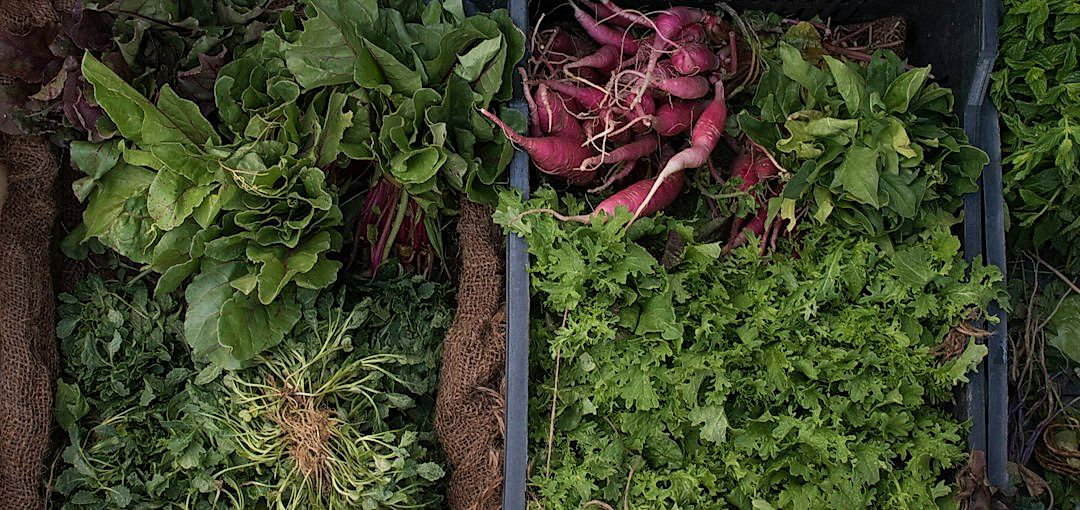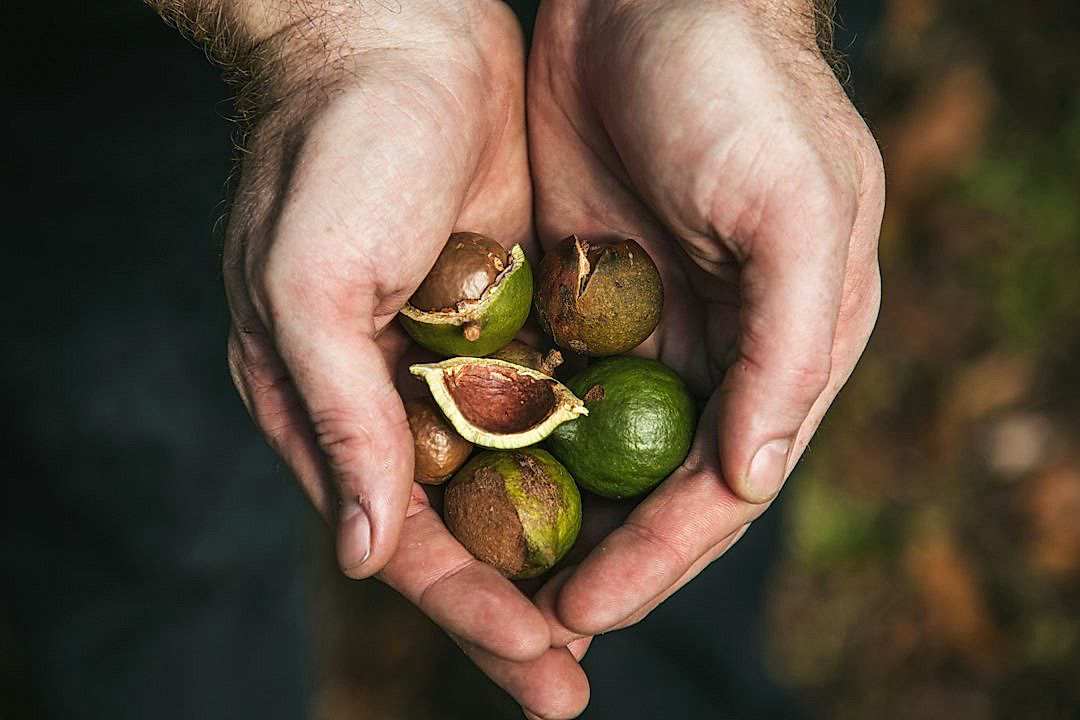The rise of a plant-based lifestyle has been nothing short of significant in recent years, acting as a significant driver of change in agricultural methods and market demands.
This shift in consumer behavior is visibly transforming the landscape of produce farming.
But what exactly does this mean for today’s produce growers?
This question deserves a closer look.
We aim to dig into the current trends and projections, evaluating their implications.
This objective analysis will provide valuable insights into how the evolution of dietary habits is influencing the agricultural sector.
Contents
- Plant-based Trends Affecting Produce Growers
- 1. Rising demand for plant-based protein sources
- 2. Shift towards organic and non-GMO crops
- 3. Increased consumer interest in exotic fruits.
- 4. Adoption of Sustainable Agriculture Practices
- 5. Increase in Home Gardening and Urban Farming.
- 6. Rising Popularity of Meal Kits with Fresh Produce
- 7. Need for Faster Farm-to-Table Delivery Systems
- The Bottom Line
Plant-based Trends Affecting Produce Growers
1. Rising demand for plant-based protein sources
There has been a significant increase in the demand for plant-based protein sources. This change in consumer preference is primarily driven by the growing awareness of the health benefits associated with consuming a plant-based diet, resulting in a major shift in the food industry.
The consumption of plant-based protein such as peas, lentils, chickpeas, and beans has drastically risen. These food items are not only rich sources of protein, they offer other essential nutrients and are beneficial in maintaining overall health and promoting weight loss.
Consumers are now more educated and eager to adjust their diet in favor of plant-based proteins over traditional animal proteins. This is due to concerns related to health, environment, and animal welfare.
The increasing adoption of plant-based diets has accelerated the need for produce growers to amend their cropping strategies, catering to the growing consumer demands for these proteins.
Research has shown that plant-based protein is more sustainable and environment friendly as compared to animal protein. Hence, this shift towards plant-based diets has also been influenced by an increased desire to consume sustainable and ethical products.
Plant-based protein sources are an essential part of a balanced diet because they are high in fiber and low in fat. They play a critical role in preventing chronic diseases like heart diseases and diabetes.
Agricultural producers and food companies have started to capitalize on this consumer trend, introducing a wider variety of plant-based options in their product range.
Retailers have also responded to the change in demand patterns. Shelves in grocery stores are increasingly being stocked with plant-based protein products.
The rise in demand for plant-based proteins has also affected the restaurant industry. Menus have expanded to include more plant-based options, with many establishments even offering entirely vegetarian or vegan menus.
The rise in popularity of plant-based proteins has resulted in a steady increase in their prices. This trend has made it profitable for farmers to grow and produce plant-based proteins.
Produce growers have faced challenges due to the shift in demand towards plant-based proteins. However, they have also found new opportunities in this trend and are in a position to innovate and diversify their products.
The shift provides opportunities for crop rotation schemes to include more of these plants which will benefit the soil and overall farm biodiversity. Therefore, the benefit is not limited to the consumers but also provides a unique opportunity for sustainable farming.
Overall, this trend is not simply a short-lived fad. It is expected to bring sustainable changes in the food and agriculture industry due to its potential health, economic, and environmental benefits.
Therefore, farmers and retailers who adjust to this trend will be able to tap into a growing market and have a successful future in the agri-food industry.
In anticipation of future growth, produce growers are investing in research to optimize the farming of these crops.
Ultimately, the rising demand for plant-based protein sources will continue to shape the agriculture sector as everyone in the value chain, from farmers to restaurateurs, adjust to this key consumer trend.
2. Shift towards organic and non-GMO crops
Today, more and more consumers are becoming aware of the possible health implications of genetically modified organisms (GMOs) and the widespread use of pesticides in conventional farming.
This has prompted a major shift towards organic and non-GMO crops as consumers strive to eat healthier and safer food.
Notably, research shows that organic and non-GMO crops offer more nutritional value and fewer health risks compared to their GMO counterparts.
In response to the growing consumer demand, produce growers are beginning to invest more time and resources into producing organic and non-GMO crops.
This trend does not only affect what they plant, but also touches on how they grow and harvest their crops.
The shift towards organic and non-GMO crops is also transforming agricultural policies and practices across the globe.
Organic farming requires adherence to certain strict standards, such as the prohibition of synthetic pesticides and fertilizers, and the commitment to animal welfare and biodiversity.
As a result, produce growers who aspire to tap into this segment must invest in organic certification which can be quite rigorous and expensive.
Despite the challenges, however, many growers see great value in this shift, mainly due to the potential for higher market prices and returns for organic and non-GMO produce.
Another force propelling this trend is an increasing interest in sustainability among consumers.
Organic farming methods are often perceived as more environmentally-friendly, attracting consumers who are keen on reducing their carbon footprint and supporting responsible farming practices.
Organic and non-GMO products also tend to have longer shelf life compared to conventional produce, which is an advantage for both growers and retailers.
To cope with the increased demand, many produce growers are following a dual strategy of growing both organic and conventional crops, creating a niche market for organic produce while also catering to the mainstream market.
Finally, technology is playing a significant role in supporting the switch to organic and non-GMO agriculture, with innovations like precision farming tools, vertical farming, and organic pest control methods coming into play.
By embracing this trend, produce growers can not only increase their profits, but also contribute to a healthier and more sustainable food system.
3. Increased consumer interest in exotic fruits.
Exotic fruits have been gaining significant attention among consumers.
This trend is driven by the ever-evolving quest for unique flavors, and an increased awareness of the various health benefits said fruits offer.
As consumers broaden their horizons, their desire to consume fruits that are not conventionally grown in their regions has markedly increased.
While traditional fruits like apples and oranges continue to be staples, there’s a growing market for less common fruits such as starfruit, dragon fruit, lychee, and passionfruit.
This has pushed produce growers to experiment with various crop choices, ending up diversifying their crop production beyond traditional farm outputs.
This experimentation is usually successful due to improvements in global transportation and logistics, making it possible to source and move these fruits quickly and efficiently.
Changes in farming techniques, growing conditions, and access to better quality seeds have made it viable for farmers to grow these fruits locally.
In addition, the rise in social media platforms and online marketplaces has provided a platform for growers to reach consumers, thus increasing the visibility and availability of these exotic fruits.
Subscriptions and delivery boxes filled with a variety of rare, exotic fruits have become a popular choice for consumers looking for convenience and novelty.
As consumers are turning more towards plant-based diets, the importance of including a variety of fruits, including exotic ones, has increased manifold.
Vegetarian and vegan trends have made fruits a mainstream dietary component, and the wider the variety, the more appealing it is to the consumer.
This directly influences the demand for exotic fruits, offering potential economic benefits for growers open to modifying their crop production.
It’s important for growers to continue monitoring consumer trends and preferences, which can be quite volatile and change rapidly.
However, the current consumer interest in exotic fruits shows no signs of slowing down and may continue to rise in the future.
Overall, the increased consumer interest in exotic fruits signifies how plant-based trends are shaping the agricultural landscape, making new demands on growers and the wider food production industry.
4. Adoption of Sustainable Agriculture Practices
The adoption of sustainable agriculture practices is one of the significant trends impacting produce growers amidst the rising demand for plant-based proteins.
As consumers become more conscious of the environmental and social impacts of the production and consumption of food, they are increasingly drawn to products produced sustainably.
This shift has encouraged many produce growers to adopt greener, more sustainable methods of farming.
Produce growers now recognize the urgent need to implement sustainable measures to preserve the environment and ensure the longevity of their agricultural practices.
Sustainable agriculture practices involve several elements, like organic farming, crop rotation, intercropping, and the application of green manure and natural pest control.
By adopting such methods, produce growers can significantly reduce the destructive environmental impacts associated with conventional farming.
This can also enhance the quality of the produce, thus improving its nutritional content and overall taste.
An exciting facet of sustainable agriculture practices is the potential for reduced reliance on artificial pesticides and fertilizers.
Many of these synthetic materials, used extensively in traditional agricultural practices, have been linked to significant soil, water, and air pollution.
Through sustainable farming, growers can mitigate these harmful effects and contribute to a healthier ecosystem.
Adopting sustainable agriculture practices also bolsters resource conservation, optimizing the use of water and improving soil health and fertility.
Implementing these practices may not be easy, but it stands as an important step towards building a more sustainable and resilient food system.
It’s a significant part of the global efforts to fight climate change and preserve natural resources for future generations.
More importantly, produce growers adopting these practices are directly contributing towards the creation of a healthier, safer, and more sustainable food supply chain.
The adoption of sustainable farming practices not only helps in meeting consumer demands but also increases resilience against unpredictable weather conditions and future market disruptions.
Clearly, the shift towards adopting sustainable agricultural practices is here to stay and continue shaping the future of farming and food production significantly.
5. Increase in Home Gardening and Urban Farming.
In response to the growing demand for plant-based nutrition, there has been a significant increase in home gardening and urban farming.
This trend has been influenced by increasing awareness of the benefits of freshly harvested produce and the desire to know the source of one’s food.
Moreover, urban farming has become a practical solution for those living in areas with limited access to fresh and organic produce.
Urban farming and home gardening allow consumers to be integral part of the plant-based food trends, granting them control over quality, variety, and supply of their homegrown produce.
More individuals and communities are making use of rooftops, balconies, and unused urban spaces to grow a variety of fruits and vegetables.
This increased interest and active participation in urban farming not only contributes to food sustainability but also nurtures an appreciation and understanding of where our food comes from.
The rise in urban farming and home gardening is also a direct response to the growing apprehensions about the environmental impacts of traditional agriculture and long-haul food transportation.
Home gardening and urban farming practices extend far beyond growing mere fruits and vegetables, with many urban farmers starting to explore the possibilities of plant-based protein sources such as beans, lentils, and quinoa.
Urban farming solutions like vertical farming, hydroponics, and the use of indoor grow lights have made it possible for individuals and families to grow their own produce year-round, irrespective of the weather conditions.
Another aspect that encourages more people towards home gardening and urban farming is the ever-increasing prices of organic produce.
Growing food at home or in small urban farms offers consumers a chance to significantly reduce their grocery bills while ensuring top-quality, healthy and organic produce.
Interestingly, this increase in home gardening and urban farming complements the rising popularity of meal kits with fresh produce, as more individuals are keen to prepare meals at home using ingredients they’ve grown themselves.
The community aspect of urban farming has also proved beneficial, fostering camaraderie, education, and often aiding in crime reduction in many urban areas by converting vacant lots into productive green spaces.
In a broader framework, the widespread interest in home gardening and urban farming could potentially incite a cultural shift towards more sustainable and local food systems.
This trend not only implies significant changes for produce growers, but also reflects a societal shift towards healthier eating patterns, thriving urban communities, and a more sustainable way of life.
6. Rising Popularity of Meal Kits with Fresh Produce
The rising popularity of meal kits with fresh produce has notably affected the operations of produce growers and opened new avenues for the farmers.
Meal kits have been leading the charge in revolutionizing the way people shop and consume foods.
People are increasingly embracing these meal kits due to convenience, the variety and fresh products they offer.
As a result, demand has risen for growers to provide fresh, garden-quality produce directly to these kit producers.
This shift has urged farmers to adapt to the requirements of these companies and modify their cultivation processes for better compatibility with meal kit production.
A typical meal kit includes multiple ingredients for a separate dish, causing farmers to grow a variety of produce to satisfy these needs.
This has resulted in a shift from the traditional focus on cultivating a small number of crop types at large volumes, to a diversified range of crops produced on a smaller scale.
Another key influence of this trend on growers has been the requirement for post-harvest handling and delivery.
Growers need to ensure that the product remains as fresh as possible till it reaches the consumer, necessitating a seamless and efficient supply chain.
Richer communication and improved coordination with logistics and meal kit companies is therefore required to limit crop damage and maximize the freshness of produce.
The importance of seasonality has been emphasized as meal kit companies often design their menus around seasonal produce.
As a result, growers have to consider the seasonality of their crops more than ever before and plan their planting schedules accordingly.
This trend also indicates an elevated interest amongst consumers in knowing the source of their food.
People prefer their meals to be made up of fresh, locally sourced ingredients, giving smaller local farms the opportunity to compete with larger commercial farms.
Plant-based meal kits are especially gaining fame due to increasing awareness about environmental sustainability and health benefits associated with plant-based diet.
Overall, the rising trend in meal kits is shaping the agricultural industry by influencing what growers produce, how they produce, and how their produce is delivered.
7. Need for Faster Farm-to-Table Delivery Systems
The accelerating demand for fresh, organic produce has spurred the need for faster farm-to-table delivery systems.
This is not just a passing trend, but a fundamental shift in consumer preferences that challenges traditional agribusiness methods.
Consumers are more informed and conscious about what they eat, where it comes from, and how it is grown.
They are demanding less processed and more natural food, and they are willing to pay a premium for it.
These changing consumer habits have driven the rise of the farm-to-table movement, which emphasizes the supply of locally-sourced and minimally processed food.
Yet delivering farm-fresh products to consumers’ tables in the shortest time possible poses logistical challenges.
Reducing the time from harvest to delivery requires an integration of various agricultural and supply chain processes.
It starts with optimizing the harvesting process to ensure that produce is picked at the right time and in the most efficient way.
Then comes the challenge of fast and efficient transportation, often across considerable distances.
This necessitates innovative solutions like improved refrigeration and storage systems, real-time tracking technologies, and sophisticated logistical planning.
The use of tech-driven solutions such as Internet of Things (IoT) devices that track temperature, humidity, and other conditions during transport, can ensure the freshness and quality of the produce even during long-haul deliveries.
Moreover, the rapid growth of e-commerce has raised consumer expectations for swift delivery times.
Many online shoppers now expect their orders to be delivered within the same day or the next day, and food products are no exception.
In order to meet these expectations, growers, packagers, and distributors might need to adopt other technology-driven solutions such as drones, autonomous vehicles, and AI-powered logistics management systems.
Indeed, integrating these high-tech solutions could turn out to be a game-changer for farm-to-table delivery systems, enabling producers to meet consumers’ demand for super-fast and fresh produce.
This topic is still evolving with technologies and methods continuously being researched and developed, to feed an increasingly demanding clientele, with more fresh, nutritious, and sustainably-produced food.
The Bottom Line
The ever-evolving agricultural landscape is reflecting several significant trends that align well with a more ecologically conscious and health-centric world.
The soaring demand for plant-based proteins, organic and non-GMO crops suggests that consumers are becoming increasingly concerned about nutritional content, food safety, and environmental impact of their food choices.
Meanwhile, intriguing trends like increased interest in exotic fruits, a resurgence in home gardening and urban farming, and the rising popularity of meal kits with fresh produce indicate a desire for diversity, self-sufficiency, and convenience in our diets.
Furthermore, the push for faster farm-to-table delivery systems underscores the growing demand for fresher and locally sourced ingredients.
These trends are not just fleeting shifts in consumer behavior, they represent a transformative change in the agricultural industry towards more sustainable and consumer-responsive practices.




